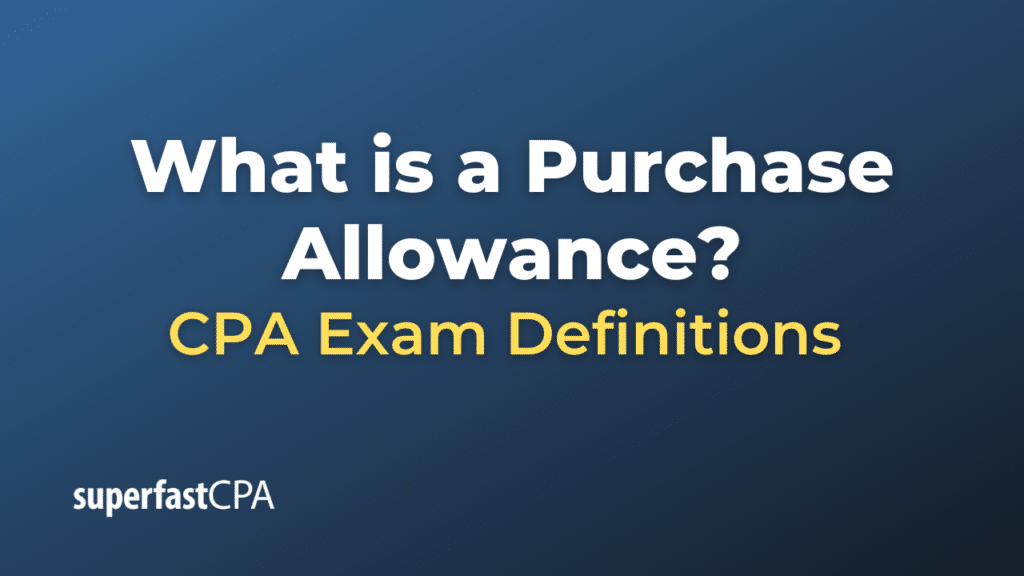Purchase Allowance
A purchase allowance is a reduction in the selling price of goods that a seller grants to a buyer due to minor defects in the products sold or other issues that make the product less valuable to the buyer. This often occurs after the buyer has received and inspected the goods but before payment has been made.
This is different from a purchase return, where the buyer sends the goods back to the seller. In the case of a purchase allowance, the buyer keeps the goods but pays a reduced price.
For example, let’s say a retail store orders 100 shirts from a manufacturer for $10 each, making the total order amount $1,000. When the order arrives, the store finds that 10 of the shirts have slight color variations that make them less desirable to customers. The store contacts the manufacturer and they agree to a purchase allowance of $2 off each of the 10 defective shirts.
This means the store will pay $980 for the order instead of $1,000 ($1,000 – $20 = $980). In the store’s books, this would be recorded as a $20 purchase allowance.
Example of a Purchase Allowance
Let’s consider a real-world business scenario to illustrate the concept of a purchase allowance:
Imagine that you own a furniture store, and you purchase a set of 20 designer chairs from a manufacturer for $100 each. The total cost of this order would be $2,000.
When the chairs are delivered and inspected, you notice that five of the chairs have minor scratches, but they are still saleable.
You contact the manufacturer and notify them about the scratches. Given the minor nature of the defect, instead of going through the hassle of returning the chairs, you and the manufacturer agree to a purchase allowance of $20 per chair for the five scratched chairs.
In this case, you would deduct the allowance from the total cost of the order. Therefore, instead of paying the manufacturer $2,000, you would pay $1,900 ($2,000 – $100).
On your books, you would record the $100 as a purchase allowance, which would reduce your inventory cost. This means that your profit margin will be higher when you sell these chairs, because your cost for these chairs is now lower due to the purchase allowance.
The journal entries would look something like this:
- Debit Accounts Payable for $2,000
- Credit Inventory for $2,000
Then, when the purchase allowance is agreed upon:
- Debit Purchase Allowances for $100
- Credit Accounts Payable for $100
This reduces your payable to the vendor and records the purchase allowance.













